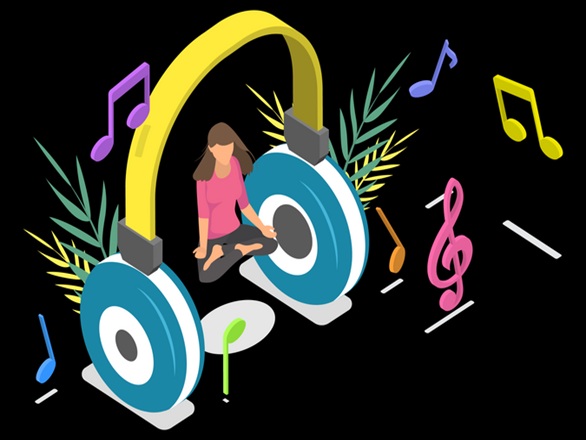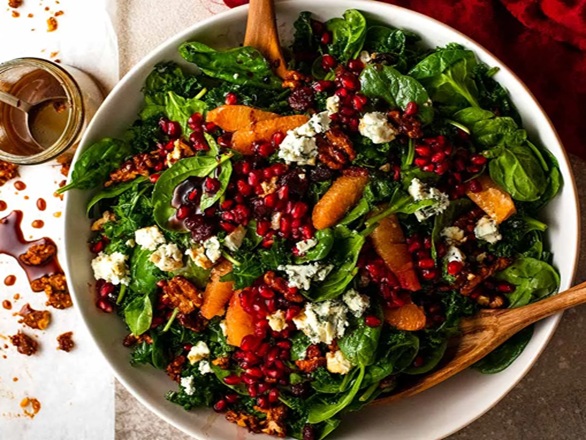In this edition
- Mindful Musicking: Therapeutic Uses of Music for Brain Health
- Soft and Creamy Thanksgiving sides
- Hearty and flavorful Thanksgiving sides
- Light and refreshing Thanksgiving sides
About the Newsletter
For the month of November, this newsletter talks about music and how it can be therapeutic and good for the brain. It also gives you a bunch of yummy thanksgiving sides you can use for the holidays. Remember all you're thankful for!
Mindful Musicking: Therapeutic Uses of Music for Brain Health
By: Julie Renato
Have you ever listened to the radio, and found yourself singing along to a song you haven’t heard in years? Or noticed your toes tapping to music while sitting in a restaurant? These are everyday examples of how music is deeply rooted in our brains, with connections reaching far beyond auditory processing, to movement, memory, language and emotional responses.
Many people would agree that music can be therapeutic. It is a part of our lives from a young age, beginning with falling asleep to lullabies and rhythmic rocking, followed by singing songs to memorize the alphabet and learn concepts in school, and eventually developing personal music preferences, attending concerts, dancing and potentially learning to play an instrument. What many do not realize is the strong networks the music we are listening to and interacting with forms in our brains throughout our lives. These networks connect multiple regions of the brain and are long-lasting, including into later stages of memory loss.
Because of the unique way music is processed in the brain, it can help us:
- Increase physical activity
- Remember information
- Maintain our vocal health and vocabulary
- Improve our mood
- Relax or fall asleep

Music therapy is an allied health profession where credentialed therapists use evidence-based music interventions to accomplish nonmusical goals and objectives. At Cleveland Clinic Nevada, as a board certified and licensed music therapist, I help individuals with neurodegenerative disorders manage symptoms and improve quality of life through group and individual therapy programs. Music therapy can positively impact symptoms related to movement, communication, cognition and mood.
You do not need to be a music therapist to incorporate music into a daily routine for cognitive benefit. Music is a low-cost tool we all have access to. It is just about building your Music Toolbox.
Music Tools for Brain Health
- Listen to familiar preferred music daily! The exact musicdoes not matter, but that it is personal to the listener.
- These songs will light up every region of the brain.Listening to them is a full brain workout.
- Move your body to music!
- Find upbeat music you enjoy and use it during a daily walk or with your favorite online exercise video. Try to move your body to the beat. This will help with coordination of movement, as well as increasing endurance.
- Sing along to music
- Whether it is in the shower, on the radio, or weekly karaoke with family or friends, singing along to music is a way to exercise memory and language.
- Build a playlist
- Group songs together that are similar to achieve apurpose, such as playing calming music to wind downat night, or uplifting music to improve mood.
- Play an instrument
- It is never too late to learn something new. Taking music lessons is a great way to exercise the brain.
- If you already know how to play an instrument,continue to play! This is an excellent way to keep thebrain active and engaged, while building off existingbrain networks.
To find a music therapist near you, visit cbmt.org.
To view or register for Cleveland Clinic Nevada Music Therapy Programs, please visit:
Cleveland Clinic Nevada Music Therapy Programs
Soft and Creamy Thanksgiving Sides
For older adults, a healthy and delicious symphony of Thanksgiving sides balances tradition with softer textures, lower sodium and higher fiber. Here is a menu of adapted classics, from soft and creamy.

Garlic and rosemary mashed potatoes: Make this classic healthier by using low-sodium broth and unsalted butter, or by substituting some or all of the potatoes with fiber-rich mashed cauliflower. The soft texture is easy to chew and the fresh herbs provide robust flavor.
Creamy butternut squash soup: This naturally sweet and creamy soup is an elegant, easy-to-digest starter. Using fresh ingredients and minimal added sugar makes it a nutrient-rich addition to the meal.
Sweet potato purée with ginger and cinnamon: Instead of a marshmallow casserole, offer a simple, warm sweet potato purée. Sweet potatoes are rich in beta-carotene and fiber, and a dash of spices enhances their flavor without excess sugar.
Broccoli and cheese casserole: For a softer take on a traditional bake, prepare a creamy casserole with well-cooked broccoli florets and a low-fat cheese sauce. This ensures a soft texture while providing vitamins and calcium.
Learn more about panels
Hearty and flavorful Thanksgiving sides
For older adults, a healthy and delicious symphony of Thanksgiving sides balances tradition with softer textures, lower sodium and higher fiber. Here is a menu of adapted classics, from hearty and flavorful.
Apple and pear stuffing: Adapt classic stuffing by using whole-grain bread and cooking it to a softer consistency. Add moisture with low-sodium broth and sautéed onions and mix in soft diced apples and pears for a sweet and savory fruit flavor.
Glazed carrots: Simmer carrots with a light glaze of maple syrup and a sprinkle of cinnamon until they are very tender and easy to chew. Roasting also works, as long as the carrots are cooked until soft.
Green beans with toasted pecans: Skip the canned soup and fried onions in favor of blanched or steamed green beans. Sauté them with mushrooms and onions and top with a sprinkle of toasted, crushed pecans for texture.
Cranberry orange sauce: Making cranberry sauce from scratch allows you to control the amount of sugar. Orange zest and a touch of honey or maple syrup can provide sweetness with a bright flavor and the soft sauce is easy to eat.
Learn more about panels

Green beans with toasted pecans
Light and refreshing Thanksgiving sides
For older adults, a healthy and delicious symphony of Thanksgiving sides balances tradition with softer textures, lower sodium and higher fiber. Here is a menu of adapted classics, from light and refreshing.

Kale and pomegranate salad: A shaved kale salad is a fibrous, flavorful dish that adds a vibrant color to the table. Shave the kale finely and toss with a light dressing to soften it, then add pomegranate seeds and a light sprinkling of goat cheese for tang.
Citrus and beet salad: This visually stunning salad pairs soft, earthy roasted beets with the bright flavor of citrus segments. Beets are rich in fiber and potassium, making this a healthy and colorful choice.
Learn more about panels


